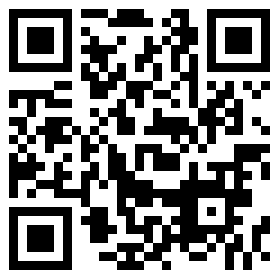

-
ꀇ
Home
-
Products
- 4G LTE WiFi Router
- Home 4G CPE
- Industrial 4G Router
- 4G Data Router
- 4G MiFi
- 4G UFi
- Muilt-Sim Crad 4G/5G Router
- Single Module Dual Sim 4G Router
- Dual Module Dual Sim 4G Router
- Three Module Three Sim 4G Router
- Three Module Tree Sim 5G Router
- Dual Module Dual Sim 5G Router
- Outdoor Dual Sim Dual Module 4G Router
- Outdoor Dual Module Dual Sim 5G Router
- Smart Home WiFi Router
- Single band WiFi Router
- AC1200 WiFI Router
- AX1800 WiFi6 Router
- AX3000 WiFi6 Router
- AX3600 WiFi6 Router
- Mesh System
- Repeater
- 5G WiFi Router
- Home 5G CPE
- Enterprise 5G CPE
- Industrial/Vehicles WiFi Router
- 4G Industrial gateway
- 4G PCBA board
- Vehicles 4G/5G Router
- Outdoor CPE
- Wirelss Bridge
- Outdoor 4G CPE
- Outdoor 5G CPE
- Outdoor Wireless AP
-
About Us
- Company Profile
- Company Culture
- Corporate Style
- Development Path
- Enterprise Honor
-
Download
- Catalog
- Specification
- Video Center
- Software
- FAQ
-
Contact Us
-
Retail Store
-
News
- Company News
- Exhibitions News
- Industry Dynamics


-
ꀇ
Home
-
Products
- 4G LTE WiFi Router
- Home 4G CPE
- Industrial 4G Router
- 4G Data Router
- 4G MiFi
- 4G UFi
- Muilt-Sim Crad 4G/5G Router
- Single Module Dual Sim 4G Router
- Dual Module Dual Sim 4G Router
- Three Module Three Sim 4G Router
- Three Module Tree Sim 5G Router
- Dual Module Dual Sim 5G Router
- Outdoor Dual Sim Dual Module 4G Router
- Outdoor Dual Module Dual Sim 5G Router
- Smart Home WiFi Router
- Single band WiFi Router
- AC1200 WiFI Router
- AX1800 WiFi6 Router
- AX3000 WiFi6 Router
- AX3600 WiFi6 Router
- Mesh System
- Repeater
- 5G WiFi Router
- Home 5G CPE
- Enterprise 5G CPE
- Industrial/Vehicles WiFi Router
- 4G Industrial gateway
- 4G PCBA board
- Vehicles 4G/5G Router
- Outdoor CPE
- Wirelss Bridge
- Outdoor 4G CPE
- Outdoor 5G CPE
- Outdoor Wireless AP
-
About Us
- Company Profile
- Company Culture
- Corporate Style
- Development Path
- Enterprise Honor
-
Download
- Catalog
- Specification
- Video Center
- Software
- FAQ
-
Contact Us
-
Retail Store
-
News
- Company News
- Exhibitions News
- Industry Dynamics
Intelligent Nursing Home Solutions
The use of professional intelligent cellular routers is revolutionizing elderly care by ensuring timely health monitoring and improved safety within nursing homes.
Background
By 2020, the global population surpassed 7.7 billion, with approximately 800 million elderly individuals. According to the World Bank, people aged 65 and above account for 10% of the total population. Nursing homes offer essential services such as accommodation, personal care, and assistance with daily activities like eating, dressing, and medication. However, while nursing staff provide valuable support, they cannot replace family members and cannot offer 24/7 personalized care.
In light of the COVID-19 pandemic, special precautions are being taken to protect the elderly, who are particularly vulnerable due to lower immunity levels. Although face-to-face interaction is necessary for family members and staff, it poses a health risk. This has led to the increased adoption of cellular routers in nursing homes to enhance safety and health monitoring.
Solution
Intelligent cellular routers provide an effective solution for remote monitoring in nursing homes. These routers ensure the timely transmission of health data, such as blood pressure, directly to monitoring platforms. This allows nursing staff to receive real-time health updates on the elderly.
In addition, these routers enable both wired and wireless connections to security systems, such as CCTV cameras and Wi-Fi-enabled smart door locks. By monitoring these systems, nursing staff can quickly detect emergencies and respond accordingly. Furthermore, the routers offer secure Wi-Fi access for smartphones and portable devices, enhancing communication and accessibility for both staff and residents.
Conclusion
By integrating intelligent cellular routers into nursing home operations, facilities can enhance elderly care through real-time health monitoring and increased safety measures. These technologies help bridge the gap in providing continuous care while minimizing physical contact and ensuring the well-being of the elderly during challenging times.
NEWS
ABOUT US
—
-
ꁸ Top
-
ꂅ +8615818538755
-
ꀥ QR code

Copyright © Shenzhen Zhibotong Electronics Co., Ltd.



